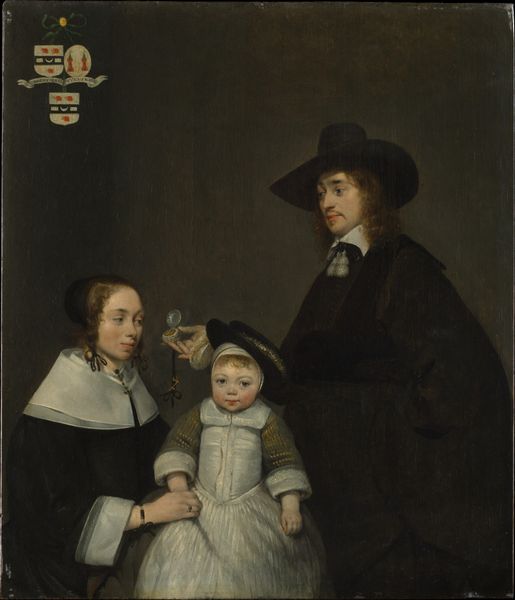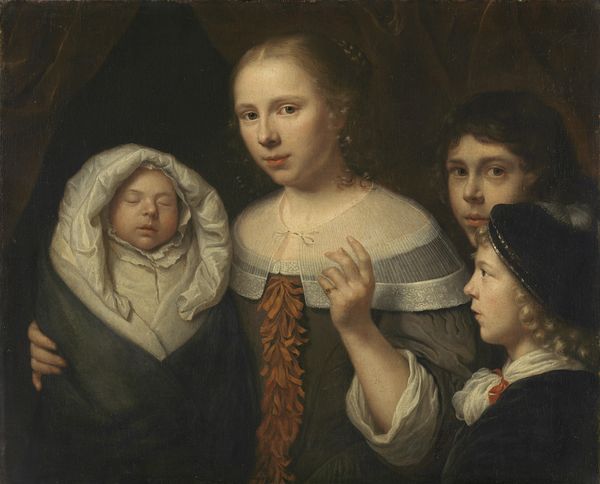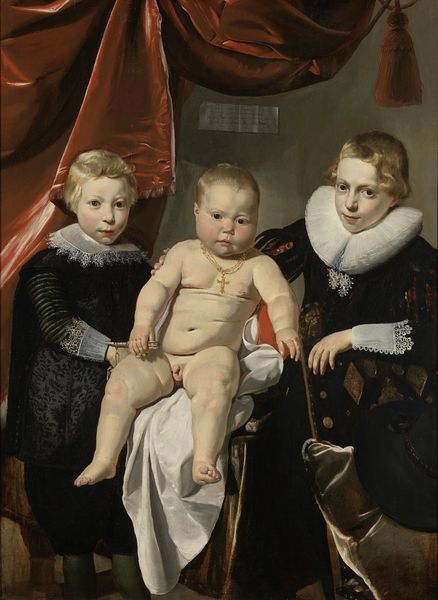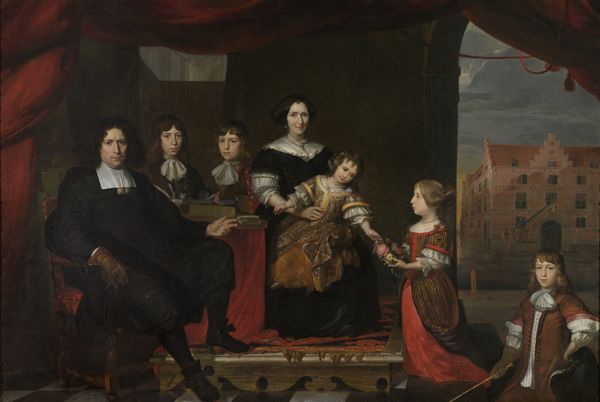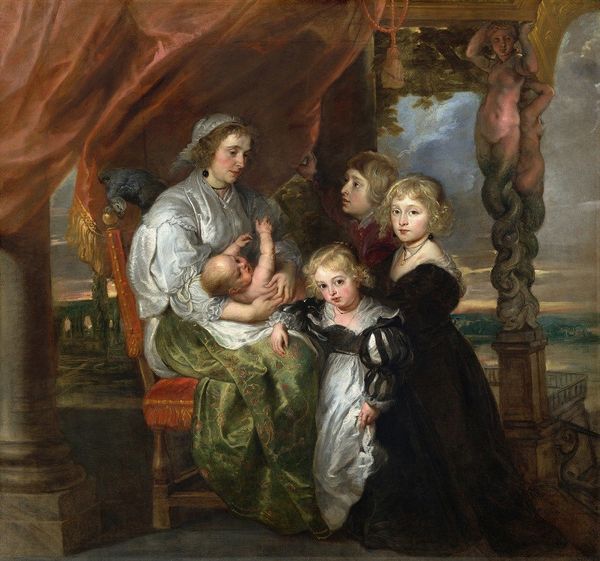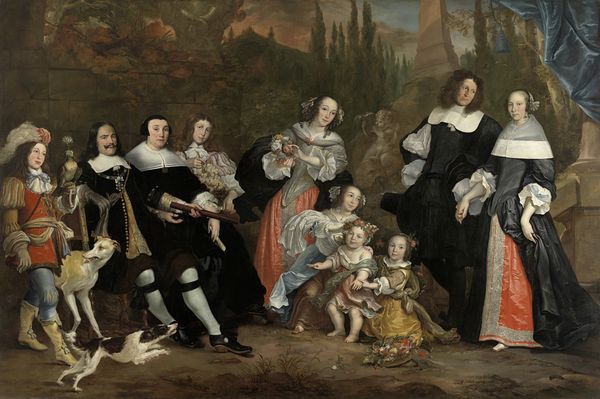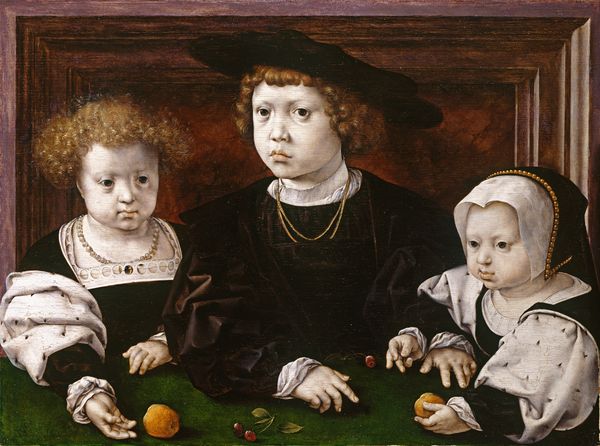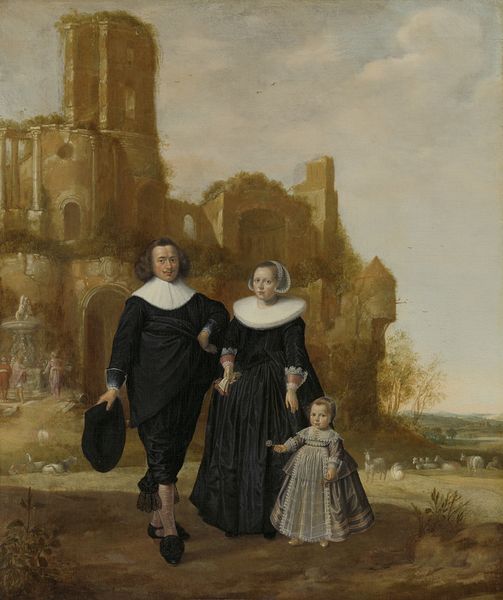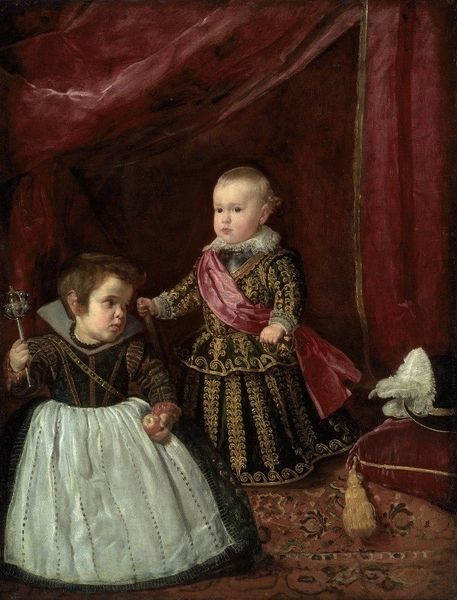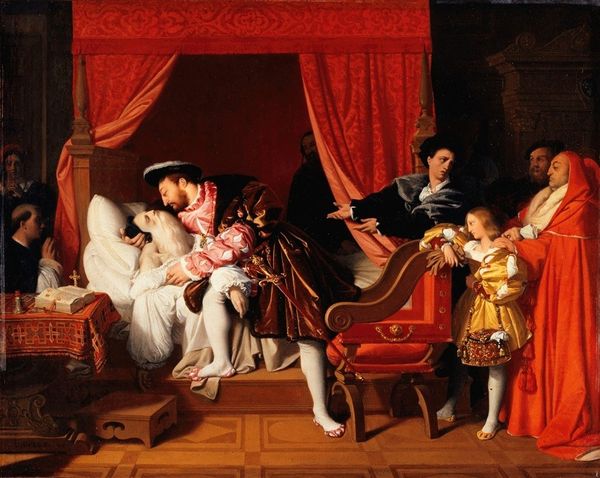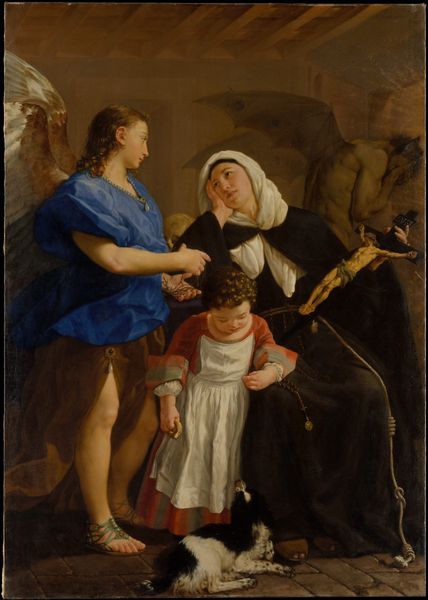
Willem van der Helm (c 1625-75), Municipal Architect of Leiden, with his Wife Belytgen Cornelisdr van der Schelt (d 1661) and their Son Leendert (1622-64) Possibly 1656 - 1659
0:00
0:00
painting, oil-paint
#
portrait
#
dutch-golden-age
#
painting
#
oil-paint
#
figuration
#
oil painting
#
genre-painting
#
realism
Dimensions: height 148 cm, width 127.5 cm, depth 8 cm
Copyright: Rijks Museum: Open Domain
In this Dutch Golden Age painting, Barent Fabritius portrays Willem van der Helm, a municipal architect of Leiden, with his wife and son. The table before them is laden with symbolic fruit: grapes, traditionally associated with abundance and prosperity, and peaches, symbols of harmony and truthful speech. Consider how the motif of fruit as a symbol of wealth and virtuous life is present in paintings across time and space, such as the still lifes of ancient Rome or the Renaissance depictions of paradise. Their repetition speaks to a deeper, shared human desire for prosperity and harmony. Such symbols tap into our collective memory, evoking emotional responses tied to deep-seated cultural associations. The fruit in this painting is therefore not merely decorative; it is a powerful force, subconsciously engaging the viewer and connecting them to timeless human ideals. This cyclical progression of symbols—resurfacing, evolving, and taking on new meanings—demonstrates the enduring power of imagery across time.
Comments
No comments
Be the first to comment and join the conversation on the ultimate creative platform.
